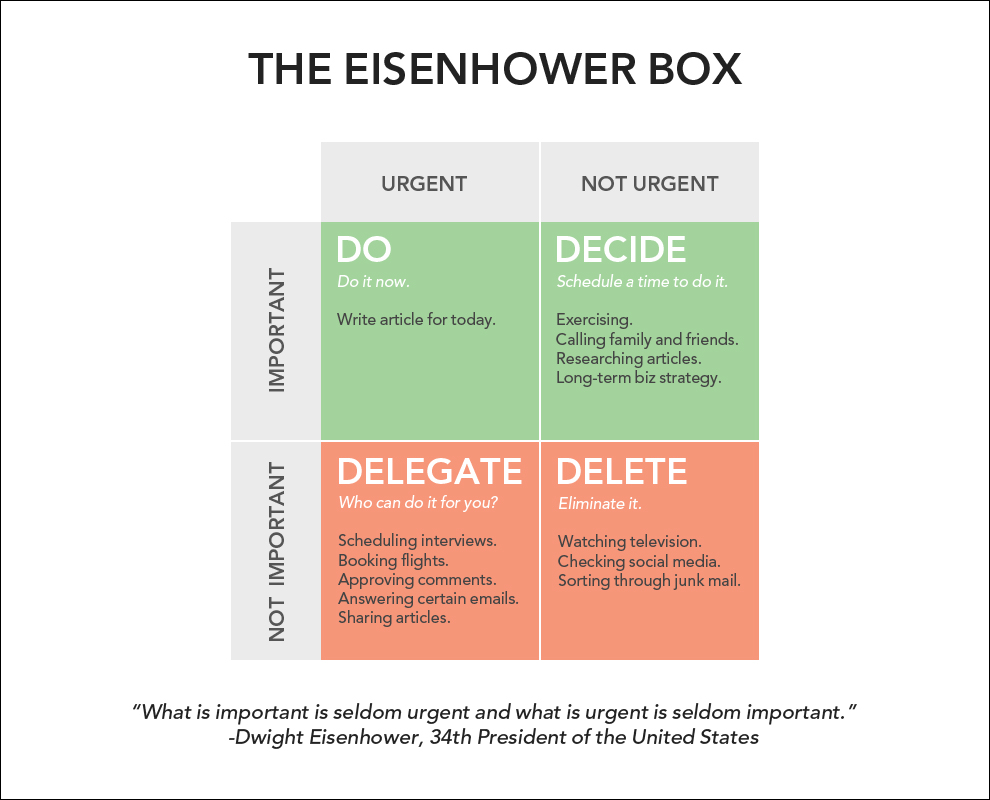The Eisenhower Matrix helps you decide and prioritise tasks based on urgency and importance. In fact, it is also referred to as the Urgent-Important Matrix.
What is important is seldom urgent and what is urgent is seldom important.
– Dwight Eisenhower
- Urgent tasks are tasks that have to be dealt with immediately.
- Important tasks are tasks that contribute to long-term goals.
#1: Urgent & Important
Try to have as few tasks as possible. If you spend too much time working on this kind of tasks, you are working solely as a trouble-shooter, and never finding time to work on longer-term plans.
If two or more tasks appear to be equally urgent, you might want to re-assess them with the help of other team members connected to the tasks.
#2: Not Urgent & Important
You should spend most of your time working on this kind of tasks. Those tasks allow you to work on something important and have the time to do it properly without rush and focusing on quality work in an efficient manner.
Probably are the most neglected tasks but the most crucial ones for success, this quadrant can include strategic thinking, deciding on goals or general direction and planning.
#3: Urgent & Not Important
You need to minimise these tasks, they are undermining your productivity, often they are mistaken to be important when most of the times are not.
Try always to question them, so if you can avoid these tasks do it by delegating them to another person.
#4: Not Urgent & Not Important
You want to reduce the trivial tasks in this quadrant.
To reduce these activities and remove the temptation to go back to them, it helps to create a clear structure for your day by focusing on the tasks in quadrant 2.
- Eisenhower’s Urgent/Important Principle
- The Eisenhower Decision Matrix: How to Distinguish Between Urgent and Important Tasks and Make Real Progress in Your Life
- How to improve your time management skills with the urgent-important matrix
- How to be More Productive and Eliminate Time Wasting Activities by Using the “Eisenhower Box”
- The Eisenhower Decision Matrix: Important vs. Urgent
